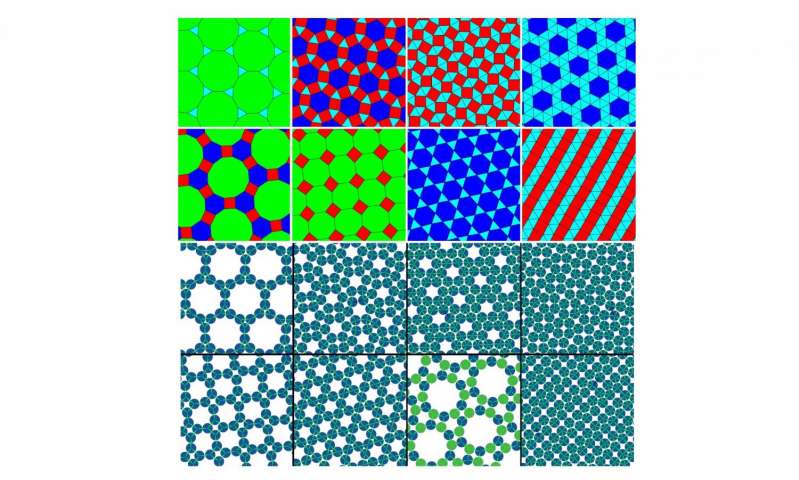For the first time in history, researchers have been successful in simulating particles that are capable of self-assembling into frameworks that formulate geometrical arrangements known as Archimedean tilings. One important factor that is significant in in realization of such structures in a strategy known as minimal positive design, it considers both chemical selectivity and geometry of particles for this purpose. The process has multiple applications in molecular self-assembly that can one day be used in creation of a large selection of nanoscale technologies.
Prior to this, the researchers were successful in self-assembling particles into Platonic tilings that are much simpler arrangements with result periodic arrays of single shapes like squares hexagons, as well as triangles. For this purpose, researchers applied a strategy known as positive design that promotes desired structure on the basis of particle geometry. As and when these particles get fused and cooled. These self-arrange into Platonic wings all by themselves them on the basis of their underlying physical, chemical, and thermodynamic interactions.

Self-assembling particles are the next level simple arrangement. Archimedean tilings have a much more difficult structure. Archimedean tilings are made up of two-three different shapes and have a single vertex. There are eight types of these, and the new design strategy can help in construction of all eight of those. The new strategy has the “minimal” aspect that related with its chemical sensitivity. The researchers discovered that one can identify all interparticle interactions that are included in the desired arrangement. The lead researcher Whitelam says, “The results show that you need ‘chemical specificity’ of interactions to self-assemble certain simple, regular structures. I wanted to write a paper about the amount of ‘information’ that you need to ‘program’ into a particle in order to allow it to self-assemble, in the presence of many copies of itself, into a desired structure. .The simplest way of tiling a plane is to cover it with triangles, or with squares, or with hexagons. These patterns are called the Platonic or regular Archimedean tilings. Other authors have shown that particles with certain geometric properties—with sticky patches at certain angles—can spontaneously form the networks that are equivalent to these tilings, meaning that if you draw lines between particle centers, then the picture you get looks like a tiling.”
Filed Under: News


Questions related to this article?
👉Ask and discuss on Electro-Tech-Online.com and EDAboard.com forums.
Tell Us What You Think!!
You must be logged in to post a comment.